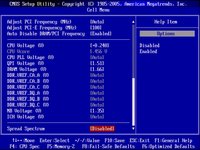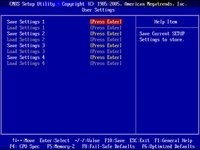X58 On A Budget: Seven Sub-$200 Core i7 Boards
MSI X58 Pro-E
The MSI X58 Pro-E is one of only two motherboards in today’s roundup to properly support seven expansion cards.
Three x16-length PCI Express 2.0 slots support two cards at full bandwidth and a third with x4 pathways. Unlike the similar layout from Asus, MSI spaces its x16 slots as x16-x4-x16, to provide additional airflow when two oversized graphics cards are used in the full-bandwidth slots.
Also similar to Asus is the lack of any Port 80 diagnostics display, which is something we’ve come to expect from enthusiast-oriented products of several smaller-yet-nimbler competitors.
MSI eliminates the “free” floppy interface but keeps the “added price” Ultra ATA controller, even though Windows XP is still more popular in new system builds than are Ultra ATA drives. MSI also does eSATA with a single port on the rear supported through a JMicron JMB363 combination controller, but while Asus lacks any connector for its added internal port, MSI’s can be found directly behind the Ultra ATA header.
The X58 Pro-E places the front-panel-audio connector in the worst possible place (the bottom-rear corner, where the cables of top-panel jacks occasionally won’t reach). MSI also adds a three-switch bus speed manipulation panel, while keeping the BIOS overclocking option. But its offering lacks support for legacy LGA 775 coolers which might be important to some liquid-cooling users.
BIOS
BIOS clock, timing, and voltage ranges can be found on Page 17’s overclocking comparison.
Get Tom's Hardware's best news and in-depth reviews, straight to your inbox.
MSI isn’t known to be a leader in BIOS options, but it’s not going to let its less-expensive product suffer from a lack of controls in such a competitive market. Most of the settings found on its best boards are carried into the lower-cost X58 Pro-E.


The most important voltage levels, VCore-Uncore-DRAM-IOH, are found along with several others in the X58 Pro-E’s Cell menu. Key frequencies and ratios are also found here.
Memory timing controls appear basic, but several advanced settings can also be adjusted by switching “Advanced Memory Setting” to manual mode.


The X58 Pro-E can store up to four custom BIOS profiles, while a separate menu allows flashing and saving BIOS from within the GUI using non-bootable media.
Accessories
MSI uses added documentation to visually improve a very basic installation kit. The X58 Pro-E Specifications page lists SLI support, but no SLI bridge is provided. A CrossFire bridge is provided but usually unneeded, since most CrossFire-capable graphics cards already include one.



